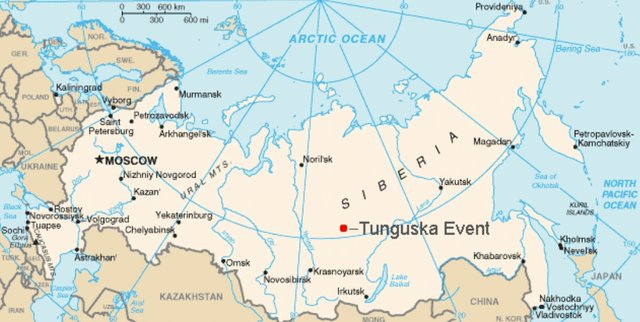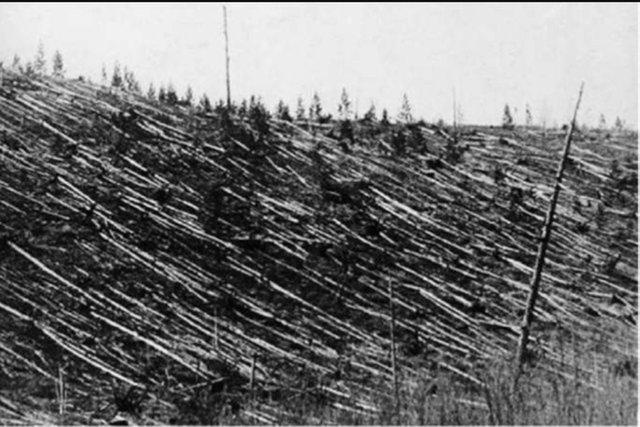The Tunguska Asteroid Impact Event
On June 30, 1908, an asteroid plunged into Earth’s atmosphere and exploded in the skies over Siberia. Local eyewitnesses in the sparsely populated region reported seeing a fireball and hearing a large explosion. They also reported massive forest fires, and trees blown over for miles. Because of the remoteness of the site, the event garnered little attention even within Tsarist Russia and much less outside. The first scientific expedition did not reach the area until 1927, but still found ample evidence of the asteroid’s destruction caused by the shock wave and heat blast from the aerial explosion. Archaeologists have found evidence of similar events in the past, and smaller asteroids regularly break up in the atmosphere causing little or no damage. NASA established the Planetary Defense Coordination Office and during the DART mission tested the technology to redirect a small asteroid should one pose a danger to Earth in the future. At about 7:15 am local time on June 30, 1908, when Tsar Nicholas II ruled Russia, in one of the remotest areas of Siberia, a most unusual event occurred. The few reindeer herders of the local Evenki people who witnessed the event, none from closer than 20 miles away, described seeing a fireball trailing smoke, then a flash brighter than the Sun, followed by a loud noise like thunder. Those closest to the event reported being blown into the air and knocked unconscious, and their dwellings damaged or destroyed. Fortunately, because of the low population density, very few human casualties resulted, but many herds of reindeer perished. Further afield, eyewitnesses reported seeing a large column of smoke rising high into the atmosphere. The asteroid, called a bolide once in the Earth’s atmosphere, with an estimated diameter of 130 feet, had an entry angle of about 30 degrees based on the trail it left in the sky, and exploded at an altitude of about 6 miles. The resultant shock wave and heat blast most likely correlate with the eyewitness reports and with the destruction described by later expeditions. Seismic instruments in Russia hundreds of miles from the site recorded the tremors caused by the shock wave. No scientific expeditions to the Tunguska site took place for nearly 20 years, partly due to its remote location and partly due to distractions such as World War I, the Russian Revolution, and the ensuing civil war. The Soviet Academy of Sciences first sent geologist Leonid A. Kulik on an expedition to the site in 1921, but the area proved so inaccessible that he could not reach it. Not until 1927 did Kulik succeed in reaching his goal. Even though 19 years had passed, the area still bore unmistakable signs of the explosion. In his observations on this and three subsequent expeditions, Kulik described a butterfly-shaped area of destruction of 830 square miles with an estimated 80 million trees knocked over. Near the epicenter, trees remained standing but with broken branches and stripped of bark, with evidence of burning. Although Kulik sought and failed to find physical evidence of the bolide, most likely due to the mid-air explosion vaporizing the object, later expeditions did find microparticles indicating an extra-terrestrial origin, although not specific enough to determine if the object was an asteroid or a comet. Most scientists today believe it was an asteroid that rained destruction on Siberia on that June day in 1908. In 2016, the United Nations proclaimed June 30 as International Asteroid Day to raise awareness about asteroids and efforts at planetary defense.

